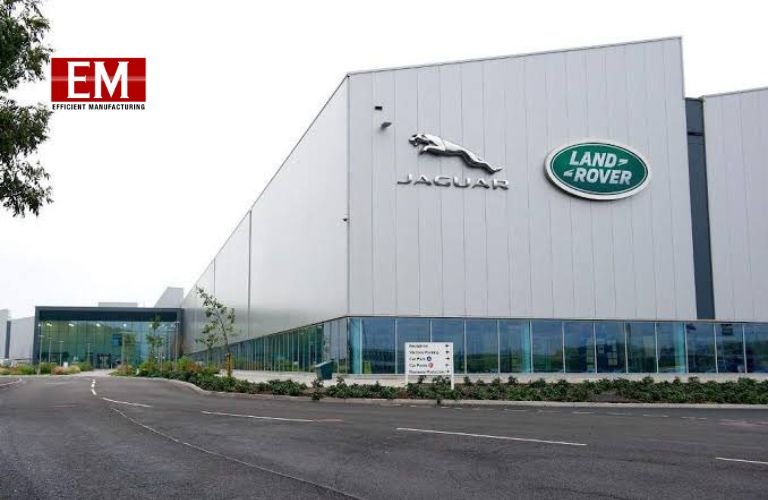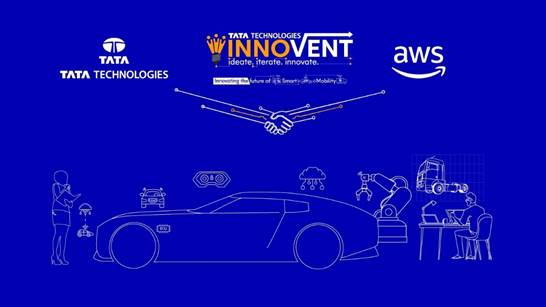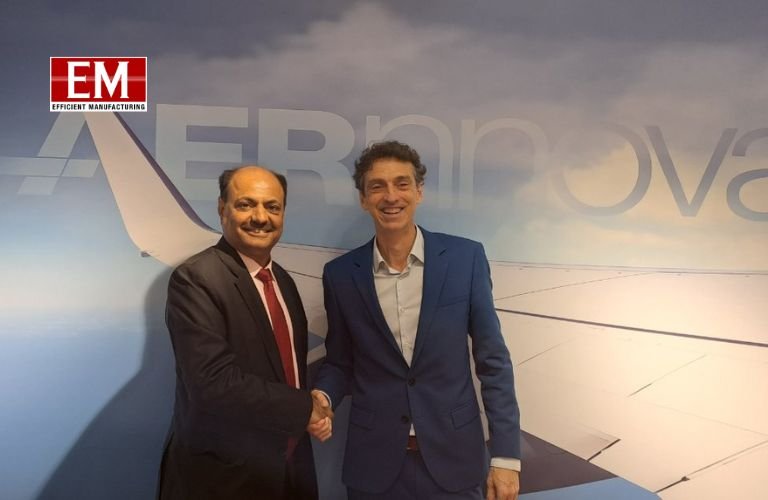| By Hemant K Mehta, Chairman and Managing Director, Elegar Kerpen Kabel India
Wire and cable manufacturing, vital for infrastructural development, plays a pivotal role in today’s interconnected world, evolving from simple copper wires to modern fibre-optic cables. As the industry adapts to global demands and stringent regulatory standards, manufacturers strive for innovation, sustainability and adherence to international quality processes, emphasising the crucial role of wire and cable solutions across diverse industries. This article explores the wire and cable industry’s dynamic growth, trends and innovations, addressing challenges and highlighting its impact on crucial sectors such as renewable energy, automotive, railways, distribution, consumer electronics and telecommunications
Wire and cable manufacturing is among the most crucial components of infrastructural development. In our interconnected world, wires and cables have an indispensable role, which has evolved drastically as the industry navigates its journey from simple copper wires to modern fibre-optic cables. Starting from advancement in design, use of material and integration of technology to the advanced manufacturing process, all have collectively paved the way for the global wires and cables industry to undergo massive growth.
A report shared by Fortune Business Insights projected that the global wires and cables market size would touch $294.73 billion in 2029, up from $200.3 billion in 2022, recording a CAGR of 5.7%. Similarly, the domestic electric wire and cable market is expected to grow by $2189.92 million between 2022 and 2027, marking a CAGR growth of 4.63%. Much of the projected growth will be driven by the country’s burgeoning energy consumption in domestic and industrial segments and the need for innovation in the wire and cable sector. Additionally, with the growing urban density, the demand for multi-layered, fire-resistant and flexible domestic cables is increasingly rising as more entities prioritise safety norms to eliminate the risk of accidental electrical fire hazards.
In the last decade, the wire and cable manufacturing segment has emerged as a core industry whose increasing growth is a direct result of the soaring demand from the infrastructure, renewable energy, oil and gas, automobiles and defence sectors. As more industries and global cities push for efficient and capable transmission of data, the wire and cable industry continues to leave a notable impact on crucial industries.
Latest trends and their impact on the industry
The industry has undergone several processes and innovations in the last couple of years, which have helped improve the sector’s manufacturing operation. Industry players who have been quick in identifying and implementing new sector-specific trends and innovations have remained ahead of the curve and relevant in the domain. Below are some of the latest trends and innovations that are shaping different sectors, including the wire and cable industry:
- The wire and cable sector
The global economy is on the brink of a new industrial revolution that is focused on the use of digital technology to enable automation of production processes. This comes as several industry players switch to automation to enhance their manufacturing potential. Wire and cable manufacturing companies are transitioning into smart factories by increasingly using automated machines and robotics to boost efficiency and lower the cost of production. This smart technological integration is helping the manufacturing potential of companies by enhancing their precision and minimising the room for human error. Many wire manufacturers are embracing the Industry 4.0 principles on a broader scale by incorporating digital technologies, such as the Internet of Things (IoT), AI and Big Data analytics at every level to optimise the manufacturing process significantly. In the next few years, AI will play a more comprehensive role in processes such as packaging, coiling and logistics, while manpower will continue to ensure efficiency at every step.
- Renewable energy sector
With a sharp rise in awareness about climate issues across the globe, there’s a massive push to urgently adopt renewable energy sources to phase out reliance on fossil fuels. According to data shared by IRENA, the global renewable energy capacity grew to 2,802,004 MW in 2020, up from 2,542,035 MW in 2019, recording a 10.23% increase YoY. This substantial uptick in solar and wind energy projects has accelerated the demand for specialised wires and cables that cater to the unique requirements to support sustainable energy drives. This demand arises from the fact that renewable energy sources, such as solar and wind, require suitable infrastructure supported by wires and cables to integrate them into the power grid. Notably, the growing reliance on renewable energy sources, such as wind and solar energy, has also prompted a massive development in renewable energy infrastructure globally, increasing the demand for products like solar cables. For instance, in 2020 the global market for solar cables was valued at $694.76 Million and is expected to touch $1686.91 Million by 2028. This sharp growth has encouraged the wire and cable sector to innovate products. Since solar cables have special requirements, manufacturers are investing in advanced E-Beam technology to process them. The E-beam technology enhances the resistance of premium solar cables to UV rays, ozone, weather conditions, cracks, oil and chemicals and ageing. It provides superior protection against extreme conditions and high temperatures, helping manufacturers ensure the durability and performance of solar cables. This makes the advanced technology suitable for complex solar power systems.
- Automotive and EV sector
The rise in EV adoption has necessitated the wire industry to adopt custom-built cables to address its specific electrical and efficient charging requirements. Since India is the third-largest emitter of carbon dioxide in the world, there will be a massive surge in activities to lower the carbon footprint and active zero emissions goals on a broader scale. This will put India’s renewable energy sector at the centre, requiring the wire and cable manufacturing players to cater to the bulk requirements. The Indian government is also proactively trying to accelerate the adoption of EVs by strengthening the segment’s infrastructure and the public’s access to subsidies to support their purchase. As the rate of adoption of EVs in the country grows, there will be a rise in the demand and number of EV charging hubs as well. Interestingly, this EV trend also calls for the availability of necessary power cables to support the charging requirements, signalling the need for high-performance and sustainable wire solutions.
- Railway sector
India Railway Network Cables Market size is projected to reach $999 Million by 2028, witnessing a CAGR of 12% between 2021 and 2028. One of the factors that can be credited to this growth would include the upcoming projects announced by the government. For instance, the Indian government has recently approved 7 multi-tracking rail projects worth Rs. 32,500 crores, which will cover 35 districts in 9 states, including Uttar Pradesh, Bihar, West Bengal, Odisha, Andhra Pradesh, Telangana, Gujrat, Maharashtra and Jharkhand. These projects will increase the existing network by 2339 KMs, create ample employment opportunities and raise demand for more efficient trains, infrastructure and rolling stock requirements. Another emerging factor is the increasing popularity of the high-speed railways market in India. In September 2023, the Indian government flagged nine more Vande Bharat, the mid-distance high-speed trains, to boost connectivity. Notably, such advanced train models need sophisticated operating systems to function smoothly. Simultaneously, the advanced infrastructure calls for a reliable and uninterrupted power supply supported by efficient cables. With more projects on the horizon, the demand for advanced infrastructure is bound to increase to support the anticipated growth. The rise in momentum will directly impact the demand for rolling stock units, including specialised cables.
- Distribution sector
Hemant K Mehta, Chairman and Managing Director, Elegar Kerpen Kabel India



The wire manufacturing industry has also taken a cue from the world to digitise its operations. The sector is seeing a surge in demand for smart grids designed to handle the unique flow of data and robust connectivity levels. It has pushed manufacturers to upgrade their products and processes to ensure the successful integration of advanced systems.
- Consumer electronics sector
The trend of compact and lightweight devices is currently dominating the market. This has prompted the need for thinner and much smaller cables and wires in the industry. The cable manufacturing industry players should take this as an opportunity to design and develop cables that facilitate seamless installation and functionality to emerge as pioneers in the segment.
- Telecommunication sector
The need for fast and reliable communication has also prompted the expansion of optical fibre wires and cables. The demand for the niche product, which is currently an integral part of telecommunication, healthcare and defence, is expected to grow in the upcoming years as technological innovations continue to evolve. Similarly, India is set to roll out a 5G network, which calls for new infrastructure, including new and advanced wires and cables. Such an upgrade would be indispensable to support high-speed data transmission across the country and beyond its boundaries. This also makes it imperative for industry players to adapt quickly to the evolving wire manufacturing requirements and revamp their processes to support technological advancement.
In addition to these trends and innovations, the industry is gearing up to offer more customised solutions to industries that serve as the backbone of the economy. In the upcoming years, companies will expand their expertise to offer tailored solutions that align with sectoral needs and performance requirements. Moreover, with a microscopic focus on waste reduction and sustainability, cable manufacturing companies could adopt more eco-friendly practices and undertake initiatives to lower energy consumption and support a circular economy.
Quest for global acceptance
With the global market in vision, most leading wire and cable manufacturing companies are focused on using high-performance materials to manufacture durable products that meet global standards. Manufacturers are sourcing materials from all over the world to cater to the demand for more efficient, durable, long-lasting wires and cables and the products are designed following national and international quality process standards like ISO 9001, ISO 14001 and ISO 45001 for wider acceptance. Similarly, leading manufacturers are relentlessly working to improve their product quality to avail of globally accepted product compliance certifications such as EAC, CPR, MIL, IS, IEC, JSS, BS, RDSO, DIN, ASTM, EN, UL, VDE and NF.
Today, manufacturers are also focused on producing low-smoke and fire-resistant cable products to match global fire safety and regulatory standards. They are designing fire-resistant cables that do not allow the flame to spread and are equipped to transmit electrical energy even during a prolonged fire. These upgrades and advanced product designs are helping the industry meet the growing demand for wires and cables used in safety-critical systems. As a result, manufacturing companies are focused on becoming more transparent about their products, processes and quality standards they follow.
How industry players fill the qualitative gap in the industry
Manufacturing companies are striving to enhance the quality of their products and their market reputation by sourcing not just raw materials but also machinery. Leading industry players are installing cutting-edge manufacturing units featuring state-of-the-art machinery to build innovative wire and cable solutions. The highlights of the manufacturing facilities are that they support energy-efficient practices and help lower waste through efficient optimisation of resources. In addition, they use superior quality technology or production methods to enhance the quality of their products for unparalleled performance or efficiency. Some companies also install modern machinery and advanced IoT devices to create and revamp demand lines of proficient product ranges that cater to core sectors of the country.
Challenges of the wire and cable manufacturers
Despite providing the essence of today’s infrastructure across all major industries, wire and cable manufacturers are regularly met with multiple challenges. While the nature of such challenges may vary from case to case, some of the most rampant issues include:
- Fluctuating raw material prices
Wire and cable manufacturers rely on primary raw materials, such as Copper, Aluminium, PVC, PE, XLPE, XLPO, Steel and more to develop their products. Companies mainly source raw materials from different states and countries to suit varying requirements and specifications. This often raises two challenges: fluctuation in prices of raw materials and supply chain issues. An increase in raw materials like copper impacts the cost of production, which directly influences the manufacturer’s profit margin, restraining them from tapping into their full growth potential.
- Global competition
Today, every company’s ultimate goal is to serve a global audience and support the growth and development of the global economy. This business objective puts wire and cable manufacturers at the centre of intense competition in domestic and international markets. As a result, companies are also under pressure to continuously innovate their product line and improve their offerings to cater to customers’ changing preferences while setting competitive prices. In addition, manufacturers are pushed to keep track of the latest market trends of not just their industry but also other segments they cater to so that they can adapt and implement them in their processes. While the urge to stay relevant in the market drives innovation and helps design customer-centric products, it often pushes manufacturers to strain their capabilities for profitability.
- Stringent regulatory standards
Wires and cable manufacturers are obligated to adhere to strict regulations to ensure the safety of their products. In addition, companies also have to ensure that their production and product processing has minimal environmental impact. These regulations ensure added levels of safety for customers. However, failing to comply with these regulations, costs cable companies in the form of legal or financial repercussions.
- Initiating research and development
Manufacturers often face challenges in keeping up with the latest technological trends, such as the Internet of Things (IoT), AI, Machine Learning and the Industrial Internet of Things (IIoT) to remain relevant in the industry. However, keeping up with technological advancements is easier said than done, as it requires companies to invest continuously in their research and development efforts to gain an edge over the competition.
The solution
Wires and Cables manufacturing companies can reduce the complexities in operations amid the challenges through smart strategies. To begin with, industry leaders must ensure Overall Equipment Effectiveness (OEE) to optimise the production value. OEE is a performance evaluation method to identify and eliminate factors that lead to losses. It serves as an indicator and helps in analysing the efficiency of single and integrated machinery systems. Management can utilise the data to modify their production process and fix rampant issues. Besides these, companies must continuously focus on the technological and innovation aspects to enhance the quality of their product line and offerings.
Concluding the discussion, it can be said that the wire and cable sector has a profound impact on all industries. With a projected growth of nearly 100% of the country’s electricity demand bound to jump in the next few years, the soaring energy consumption rate will drive the industry to witness more demand in newer market segments, including the renewable energy sector, EV sector and smart grid segments, with niche market products. However, manufacturers must keep up with evolving technologies and refine their manufacturing capacity following global standards to tap the market and remain relevant.












